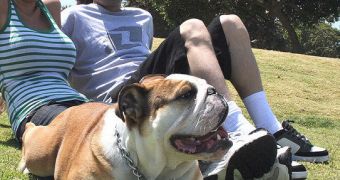Researchers in the United Kingdom have shown in a new study that the minds of dogs are more complex than originally thought. It would appear that Fido can get depressed too, the experts say.
When left alone at home for prolonged periods of time, or when family members go to school or work, dogs can become anxious, and then display “pessimistic” behavior, scientists at the University of Bristol explain.
The new investigation was funded by the UK Royal Society for the Prevention of Cruelty to Animals (RSPCA), and details of it were published in the October 12 issue of the journal Current Biology.
One of the main things that the research highlights is why dogs display their renowned behavioral response to being left alone, or when they are separated from their human companions.
“We all have a tendency to think that our pets and other animals experience emotions similar to our own, but we have no way of knowing directly because emotions are essentially private,” says Mike Mendl.
“However, we can use findings from human psychology research to develop new ways of measuring animal emotion,” adds the expert, who is a professor at the university.
“We know that people’s emotional states affect their judgments and that happy people are more likely to judge an ambiguous situation positively,” Mendl argues.
The expert was the leader of the research. He is also the Head of the Animal Welfare and Behavior research group, which is based at the UB School of Clinical Veterinary Science.
“What our study has shown is that this applies similarly to dogs – that a ‘glass-half-full’ dog is less likely to be anxious when left alone than one with a more ‘pessimistic’ nature,” he adds.
In order to determine the nature of a dog's response to various situations, researchers devised a fairly straightforward set of experiments.
They trained a number of animals to associate the position of a food bowl in a room with either an optimist or pessimist scenario.
They did this by filling the bowl with food if left in position A, or placing it empty at position B. After the dogs were trained, the bowl was placed at an ambiguous location, between points A and B.
“Dogs that ran fast to these ambiguous locations, as if expecting the positive food reward, were classed as making relatively ‘optimistic’ decisions,” the team leader says.
“Interestingly, these dogs tended to be the ones who also showed least anxiety-like behavior when left alone for a short time,” he explains.

 14 DAY TRIAL //
14 DAY TRIAL //